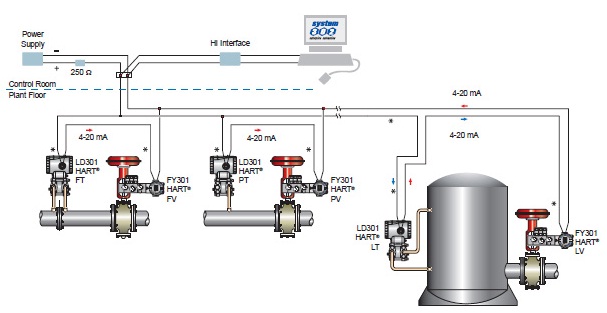What is a Loop Checking Procedure and Why is it Important?
15 June, 2020 | Engineering, Automation, Industrial Engineering, Automation Systems, Loop Checking Procedure

What is a Loop Checking Procedure and Why is it Important?
Industrial automation is a driving force in today’s business world. From companies that seek to increase their efficiency to those that use automation to increase worker safety, there is no shortage of applications for the technology.
But how do engineers figure out if their automation techniques are working appropriately? That’s where a loop checking procedure comes in. It helps to find and identify any deficiencies that might be present in an automated system. For example, an issue with a controller interface or DCS.
It’s an important procedure that brings peace of mind that an automated workflow is operating appropriately.

Why Do a Loop Check?
Installing an automated control system isn’t a simple process. It includes a period of design followed by construction and implementation. Throughout this time, there are plenty of things that can go wrong. Wiring issues, cable issues, or simple communication disruptions can throw an entire automated system off. For instance, a slightly damaged signal wire can cause intermittent problems in a control system. If this occurs, it will be difficult to gain control of the system because the damage can inconsistently affect the instrument it relates to.
That’s why a loop check is so important. This procedure helps spot any issues along the loop of the automated system from field to DCS.
It tests things like continuity of signal, alarms, range of calibration, set points, and other customized signals within the loop.
Of course, since all components of the system must be tested, loop checking is only done after installation is finished. All cables must be laid, and every checkpoint and monitor must be installed correctly. A loop check is then performed to ensure that everything is operating to perfection.
Since a loop checking process tests the operations of an automated system, the steps of the procedure will vary for different applications. An engineer checking a control system for a clean energy facility would have very different steps to follow than one checking an automated production line. Regardless of the environment, though, loop checking includes an examination of every aspect of the system—from sensors to its control logic system.

What are the Types of Loop Checks?
As mentioned, no two automated systems are identical and the approach to loop checking them shouldn’t be either. There are two main types of loop checks that exists—an analog loop check and a digital loop check. Each one has its own advantages and is better for certain situations. Let’s examine the differences between the two.
When a system uses analog signals, any distortion that occurs, also known as covert failure, goes undetected. In an automated system, these unnoticed errors can have drastic consequences. For that reason, periodic analog loop checks are performed. Their primary purpose is to verify the integrity of the 4-20mA current loop. Engineers perform a check along several points to verify linearity. They may also perform the test in reverse order. Analog loop checks help ensure that the signal is not being limited or biased and that there are no instances of range mismatch or non-linearity. Along with periodic checks, an analog loop check should be performed whenever a new 4-20mA device is installed, repaired, calibrated, or replaced.
A major benefit of digital technology is that signals are able to be transmitted perfectly without error or disruption. For systems that use digital technology, there is no need to perform an analog 4-20mA loop check. The main aspect of a digital loop check deals with a component’s device address. If this is mapped incorrectly, it can throw off the entire loop.
By performing regular, thorough loop checks on their automated systems, engineers can help ensure that things will keep running smoothly. Moreover, doing so provides an opportunity to spot and subsequently correct errors before they spiral out of control.
- Call: 1-888-551-3082
- International: 1-919-443-0207
- Fax: 1-919-867-6204
- Email: sales@wakeindustrial.com
- Address:
- 1620 Old Apex Rd
- Cary, NC 27513










